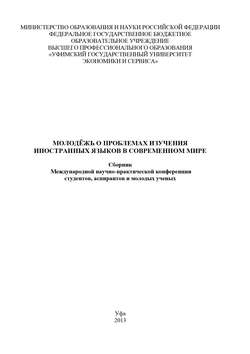Читать книгу Молодежь о проблемах изучения иностранных языков в современном мире - Коллектив авторов - Страница 6
LEXICAL CORRESPONDENCES
ОглавлениеУДК 81’373.46-021.161=111
DOLZHENKO K.
Ufa State University of Economics and Service (Ufa)
The study of the language is arguably the most hotly contested property in the academic realm. That is why linguistics compares languages and explores their histories, in order to find and to account for its development and origins to give the answers to this or that language point. Due to the semantic features of language the meanings of words, their ability to combine with other words, their usage, the “place” they hold in the lexical system of a language do not concur for the most part. All the same “ideas” expressed by words coincide in most cases, though the means of expression differ [1]. Lexical correspondences are such words and phraseological units in the target language which can be used instead of definite words and phraseological units in the source language. The term “lexical correspondence” should be differentiated from the term “lexical correlation” (correlated words). Speaking about lexical correspondence we mean words in one, target language. Lexical correspondences are usually fixed in dictionaries, that’s why thy may be also called dictionary correspondences. The principal types of lexical correspondences between two languages are as follows:
1) Complete correspondences;
2) Partial correspondences;
3) The absence of correspondences.
Complete correspondences of lexical units of two languages can rarely be found. As a rule they belong to the following lexical groups.
1. Proper names and geographical denominations;
2. Scientific and technical terms / with the exception of terminological polysemy/;
3. The months and days of the week, numerals.
While translating the lexical units partial correspondences mostly occur. That happens when a word in the language of the original conforms to several equivalents in the language it is translated into. The reasons of these facts are the following.
1. Most words in a language are polysemantic, and the system of word – meaning in one language does not concur with the same system in another language completely.
2. The specification of synonymous order which pertain the selection of words.
3. Each word effects the meaning of the object it designates.
4. The differences of semantic content of the equivalent words in two languages.
5. Each language has its own typical rules of combinability.
6. Most difficulties are encountered when translating the so called pseudo – international words i.e. words which are similar in form in both languages, but differ in meaning or use.
